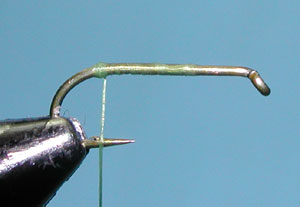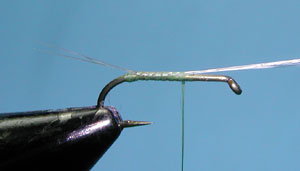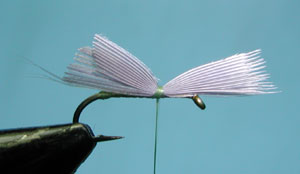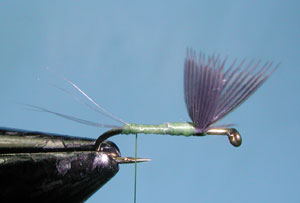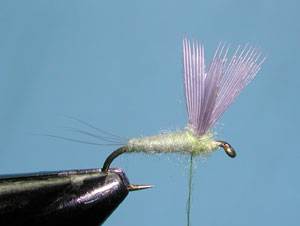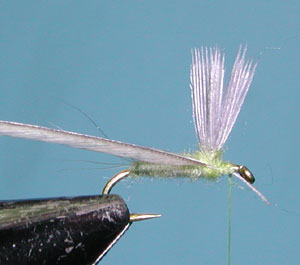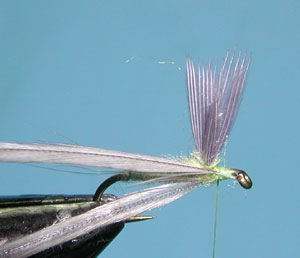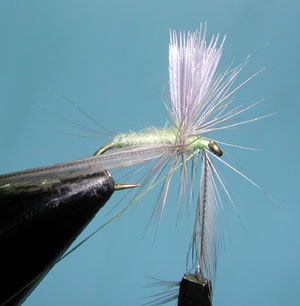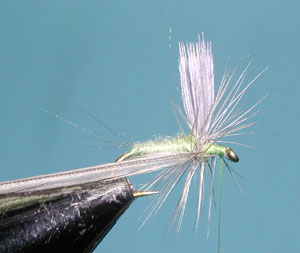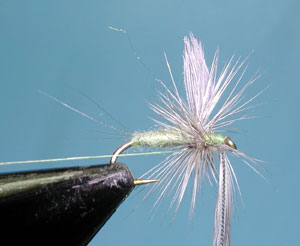Thorax Dun – a small change makes superior results
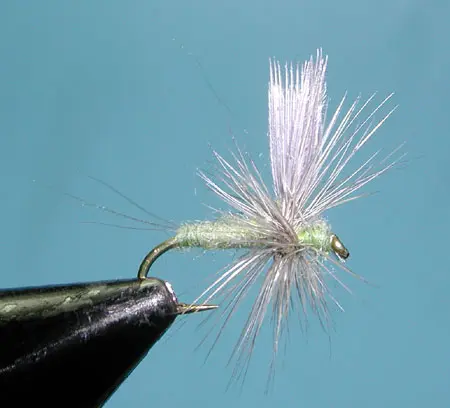
Baetis Thorax Dun
Tying Instructions
| Materials
to Order Material, click the link |
|
|---|---|
| Hook | TMC 100 #16-20 |
| Thread | Uni-thread Olive 8/0 |
| Body | Golden Olive, Superfine |
| Tail | Light Dun Microfibetts |
| Wingpost | Medium Dun Turkey Flat |
| Hackle | Light Dun Hackle |
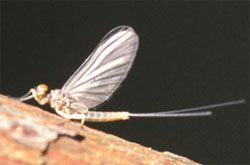
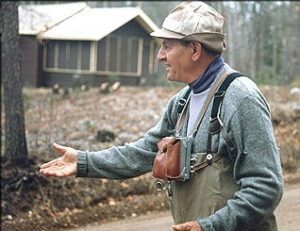
Vince Marinaro
Thorax Dun
The Thorax Dun is a variation off the Catskill Dry by Vince Marinaro. During the 1940’s , Vince examined the smooth waters of the Letort Spring Run in Pennsylvania and concluded the need to develop a fly that would more realistically represent the silhouette of the mayfly than the Catskill Dries did.
He noted that trout rises on the Letort were dependent upon the profile of the wing and the appearance of the fly from under the water. He also saw that the mayflies were supported on the water by their legs, not it’s body or tail. As a result, there was a need to redesign the Catskill.
Redesign of a Catskill
Vince redesigned the standard Catskill Dry so that the wing was positioned further back towards the middle of the shank to balance the fly. Since the body needed to be elevated above the water surface, Vince heavily hackled both behind and in front of the wing. Two hackles would be required since long genetically improved hackles were not available at the time.
X pattern for the hackles
Thus, two hackles would be attached on the shank in front of the wing. One hackle would be one size larger than standard and would be wrapped in an X pattern with the top hackles forward of the wing and the bottom hackles behind the wing. The second hackle would be one size smaller than standard and would be wrapped in an X pattern crossing the first. The top hackles would be behind the wing and the bottom hackles would be in front of the wing.
This type of hackling allowed the fly to keep all it’s parts above the water, except the legs. Later, when longer genetic hackles were available, Vince would wrap the X pattern with just the one hackle. Vince also found that the color of the wing needed to match the color of the mayfly it was to represent. He insisted that the hackles should also match the color of the wings. However, the color of the body was secondary to the color of the wings and hackles. In addition, Split tails were also designed into this pattern to help stabilize the fly on the water surface.
Other Thorax Duns
Today, most thorax dun patterns continue to be tied with a single hackle but not in the X pattern that Vince used. Some tiers just hackle behind and in front for the wing. The hackle fibers are clipped at the bottom into an inverted V shape. This is a technique that Mike Lawson of St. Anthony, ID made popular and would extol this pattern for Spring Creeks and other smooth waters. It is certainly much easier to tie with one hackle. Within the Sierra, the pattern is especially applicable to the Lower and Upper Owens River during low flows. Larry Medina came up with a nice variation, the Gray Thorax Dun, which he used during the evening hours on some high elevation Sierran streams.
Variations
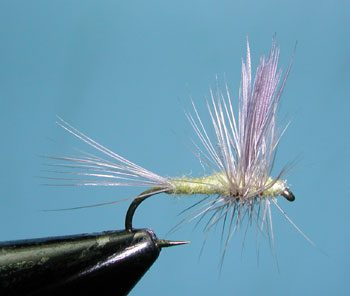
Thorax Dun – PMD
| Hook | TMC 100, #16-20 |
| Thread | Uni-thread Yellow 8/0 |
| Body | PMD Superfine |
| Thorax | PMD Superfine |
| Tail | Light Dun Spade Hackle Fibers |
| Wing | Medium Dun Turkey Flat |
| Hackle | Light Dun Hackle |
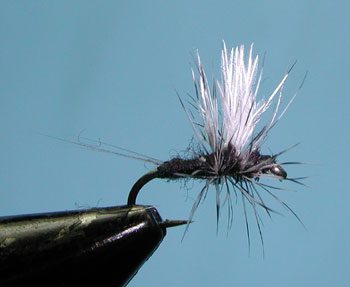
Thorax Dun – Trico
| Hook | TMC 100, #18-22 |
| Thread | Uni-thread Black 8/0 |
| Body | Black Superfine |
| Thorax | Black Superfine |
| Tail | Light Dun Microfibbetts |
| Wing | White Turkey Flat |
| Hackle | Grizzly Hackle |
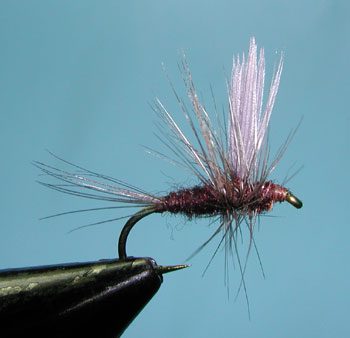
Thorax Dun – Mahogany
| Hook | TMC 100, #16-18 |
| Thread | Uni-thread Brown 8/0 |
| Body | Mahogany Brown Superfine |
| Thorax | Mahogany Brown Superfine |
| Tail | Medium Dun Spade Hackle Fibers |
| Wing | Dark Dun Turkey Flat |
| Hackle | Medium Dun Hackle |

Thorax Dun – Callibaetis
| Hook | TMC 100, #14-18 |
| Thread | Uni-thread Tan 8/0 |
| Body | Callibaetis Superfine |
| Thorax | Callibaetis Superfine |
| Tail | Grizzly Spade Hackle fibers |
| Wing | Natural Partridge Feather clump |
| Hackle | Grizzly |
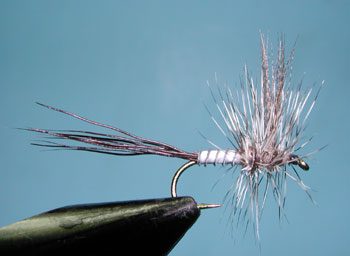
Gray Thorax Dun
| Hook | TMC 100, #14-18 |
| Thread | Uni-thread Black 8/0 |
| Body | Gray Turkey Biot |
| Thorax | Gray Olive Superfine |
| Tail | Moose Mane Hair |
| Wing | Natural Teal Flank Fibers, upright divided |
| Hackle | Grizzly Hackle |

